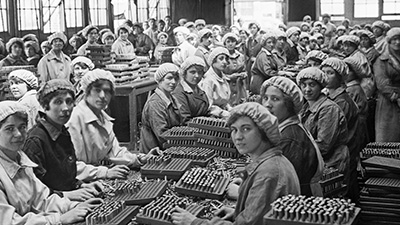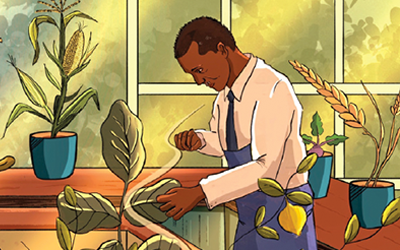Acceleration
Driving Question: How has change accelerated in the last 500 years?
Just 500 years ago, we lived in four distinct world zones. Now, we’re linked by a global network of information and commerce. How did this happen so quickly and what challenges did this acceleration bring?
Learning Objectives:
- Describe accelerating global change.
- Explain the impact of acceleration on population, technology, and the environment.
- Use data to make inferences about the past and present.
Vocab Terms:
- acceleration
- climate
- environment
- fossil fuel
- nuclear
- population
- technology
Opener: Acceleration
To teach this lesson step, refer to page 2 of the Lesson 6.4 Teaching Guide.
Join our online teacher community here to engage with other educators about Big History Project.
The simplest things you do every day, from flicking on a light switch to turning on an oven, require an amount of energy that would have been baffling just a few hundred years ago. Let’s think about what that change means.
A Changing World
To teach this lesson step, refer to page 2 of the Lesson 6.4 Teaching Guide.
Check out our Video Guide for suggestions on incorporating videos in the classroom.
For more detailed directions for reading charts check out A Guide to Reading Charts.
Closer connections between world zones meant more collaboration, innovation, and collective learning. This video and activity get into why that is.
-
Guiding Questions
-
Before you watch
Preview the questions below, and then review the transcript.
While you watch
Look for answers to these questions:
- How did the interconnection of the four world zones help accelerate innovation?
- Why did commerce and markets encourage an acceleration of innovation?
- How did the discovery of new fossil fuels help accelerate innovation?
- What are some examples of how industrialization encouraged the acceleration of innovation?
- What regions were the centers of power before and after industrialization?
After you watch
Respond to this question: How do you think the world might change as innovation continues to accelerate in the future?
Key Ideas
Mapping the World Data
Impacts of Acceleration
To teach this lesson step, refer to page 5 of the Lesson 6.4 Teaching Guide.
Is life better after five centuries of incredibly rapid change? Let’s see how you feel after reading this article and working through the activity.
-
Guiding Questions
-
Before you read
Preview the questions below, and then skim the article. Be sure to look at the section headings and any images.
While you read
Look for answers to these questions:
- How has the Modern Revolution produced technology that can be used for both good and bad?
- How did acceleration lead to World War I?
- What were some of the new technologies used in World War I?
- What were some of the new technologies used in World War II?
- What were some of the beneficial innovations that came as a result of these wars?
After you read
Respond to this question: What other technologies can you think of that have both good and bad impacts?
Closer: Acceleration
To teach this lesson step, refer to page 6 of the Lesson 6.4 Teaching Guide.
You’ve “traveled” quite a long way during this lesson. Time to use your imagination as you look back on how much has changed.
Early Environmental Activism
To teach this lesson step, refer to page 6 of the Lesson 6.4 Teaching Guide.
Looking for guidance for teaching with Graphic Histories? Join the conversation on our online teacher community.
As change accelerated, the environment suffered—but some people sought solutions to overcome these negative effects.
-
Guiding Questions
-
Before you read
Preview the questions below, and then skim the comic, paying attention to things like prominent colors, shapes, and types of text and fonts. How do you know where to start and in which direction to read? What’s in the gutters (the space between panels)? Who or what is the focus of the comic?
While you read
Look for answers to these questions:
- What were some challenges that George Washington Carver faced as a young man?
- In what ways did cotton have a negative impact on Southern farmers?
- How did Carver work to improve both the quality of the soil and the quality of life for Black farmers?
- Why do you think the artist chose to use bright colors and light to depict Carver and the plants he is working with, and then use darker colors in other portions of the graphic biography?
After you read
Respond to this question: What does George Washington Carver’s story tell you about the economic, social, and environmental impacts of industrialization?












